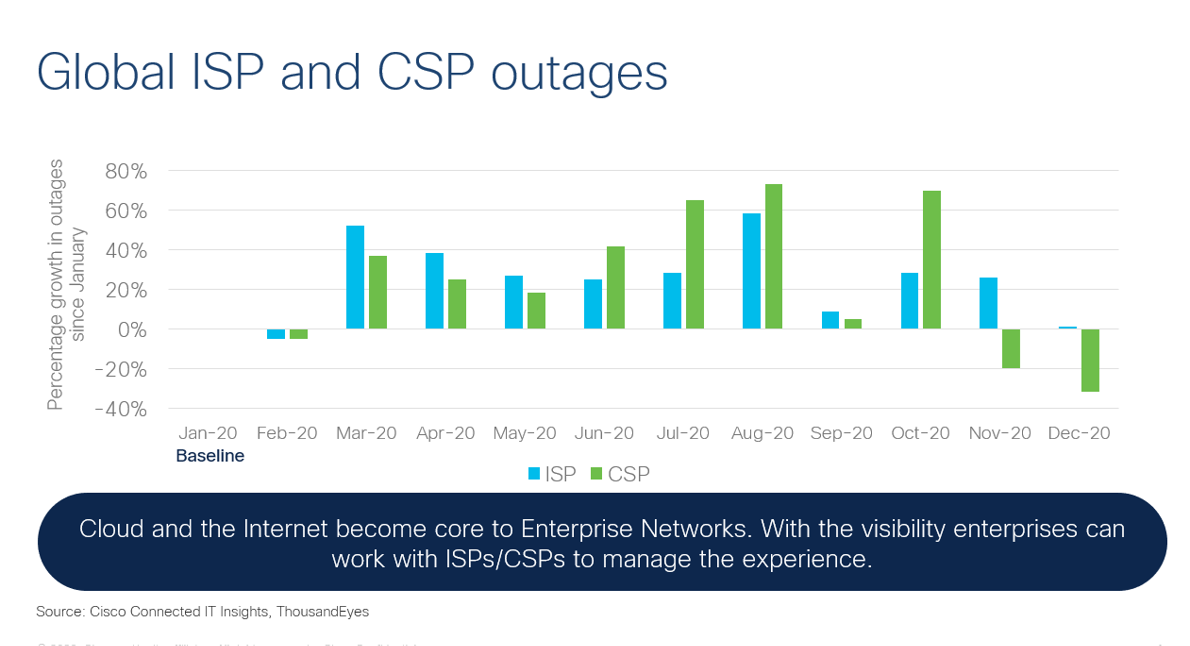Blog 2 of a 4 part series.
In this connected world, the network is the nervous system that allows everything to work together. And while it’s created limitless possibilities, it has also introduced incredible complexity, especially over the past year. In doing so, it has underscored the need for IT organizations to transform their infrastructure.
Since the global pandemic began, this complexity has grown tenfold. The rollout of stay-at-home orders worldwide led almost overnight to a steep increase in remote work. To handle the load, policies need to be created and deployed in an automated way. Infrastructure needs to be transformed. At the same time, the cloud and the Internet became an extension of the enterprise core.
IT found themselves facing multiple challenges without having the control or complete visibility into cloud or the Internet. Not only did they need to ensure that employees, partners, and customers could access corporate resources, but they also had to ensure connectivity and a great user experience, and they needed to ensure security of data. Trying to do all this without control and visibility was, in a sense, like flying blind.
As work-from-home users who would typically connect through a WAN now relied on the Internet, ISPs and CSPs (cloud service providers) also felt the strain. Rallying to cope with a different, and new, user distribution, transit and Internet Service Providers (ISPs) were forced to undertake more traffic engineering, adding, moving and reconfiguring their network resources – leading to several ISP outages. CSPs too experienced increased usage of their services as enterprises worked to accommodate a distributed, remote workforce. However, CSP outage baseline was much smaller relative to ISPs, highlighting more of an agile deployment model. Since most of these outages were managed, they took place “outside of business hours” so as to cause as little inconvenience as possible. Nonetheless, the importance of IT teams having visibility and insights into Internet and cloud provider networks cannot be overstated. It ensures an optimal experience for their user base whether in collaboration with ISPs or cloud providers, or through increased provisioning of their own applications.
Another driver of cloud adoption during the pandemic was the increase in application demand. According to Turbonomic, there was a 30% to 45% increase — depending on the industry vertical — in new cloud workloads deployed. But despite the rise in cloud adoption, the vast majority of actions on the new workloads — 98% — were scaled down. This was due to customers’ tendency to overprovision initially when moving into cloud — an issue that can be addressed using tools such as Cisco Workload Optimization Manager (CWOM) and Intersight Workload Optimizer (IWO). When these tools are used for initial workload placement, 92% of new workloads are placed accurately.
With the exponential growth in the complexity of connecting and securing any device, from anywhere, at any time, IT architecture must be reinvented for the realities of this next-generation digital world. This new architecture must be integrated to interconnect every interdependent domain in order to provide actionable insights to the IT teams managing this complex infrastructure.
Learn more about Cisco Connected IT Insights.



CONNECT WITH US